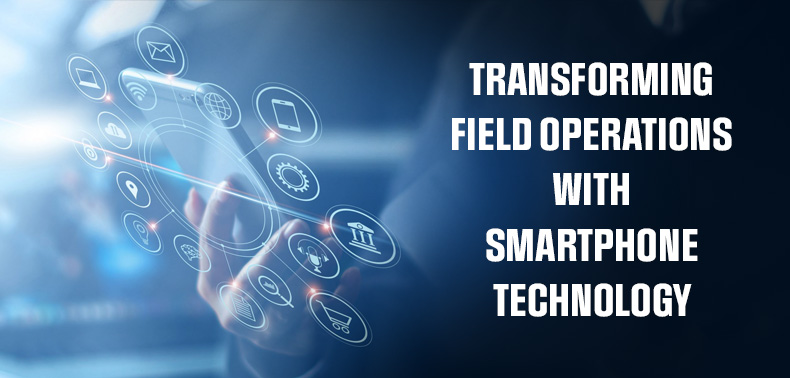views

Transforming Field Operations with Smartphone Technology
 In the current pandemic, many organizations have struggled to carrying out work that requires their field staff to physically visit prospects, customers and/or work sites to conduct business. The situation has forced the field workforce to work remotely, and do the best they can to fulfil the responsibilities of their job. However for some, working remotely is simply impractical given the nature of their business. This situation has heightened managers’ challenges to balance the need for greater insight into achieving business productivity goals and throughput, while maintaining the health and safety of the workforce. Innovative smartphone solutions can solve these operational challenges.
In the current pandemic, many organizations have struggled to carrying out work that requires their field staff to physically visit prospects, customers and/or work sites to conduct business. The situation has forced the field workforce to work remotely, and do the best they can to fulfil the responsibilities of their job. However for some, working remotely is simply impractical given the nature of their business. This situation has heightened managers’ challenges to balance the need for greater insight into achieving business productivity goals and throughput, while maintaining the health and safety of the workforce. Innovative smartphone solutions can solve these operational challenges.
Smartphones and tablets are now powerful computers in our hands, and over 92% of the U.S. population has them. They include technologically advanced Cameras, GPS, Bluetooth, accelerometers, and other sensors that can be leveraged to create smart solutions. Their high bandwidth connections to the cloud and native computing power allow mobile devices to be used as the “new laptops” for running enterprise applications. This blog article examines three different operational use cases and how smartphone-based solutions can be effective.
Case #1: Onsite Inspections & Audits
The first example is of asset-based lenders who must periodically audit the collateral used by borrowers for acquiring the loans. Traditionally lenders hire auditors / inspectors to visit job sites, car lots, etc., to ensure that the collateralized assets are where they are supposed to be and in good condition. Today because of COVID-19, auditors may be reluctant to do onsite inspections. As a result, lenders are now having their borrowers self-audit with mobile apps that confirm the asset’s location and condition, especially for low-risk loans. A smartphone app can validate the accuracy of the self-audit using advanced image processing, GPS, validation rules, and fraud detection models. This reduces lenders dependence on auditors for onsite visits, while maintaining the quality of information needed to evaluate the health and risk of loans.
Case #2: Salesforce Efficiency
A salesforce productivity mobile app can help sales managers optimize sales operations with data from built-in smartphone sensors to measure and evaluate the productivity of their salespeople. When salespeople visit a client or prospect, a smartphone app with advanced geofence and GPS location capabilities can log the time spent at the meeting and is used to collect notes, order information, etc., that can be automatically pushed into CRM systems. Managers can see reports and metrics on completed meetings, time spent in meetings, territory coverage, etc. This data provides sales managers with insights into productivity that are based on leading indicators of sales instead of waiting for sales that never come. Their dependence on the accuracy and quality of manual reports created by field staff can be greatly reduced. Sales managers can now have greater visibility into sales team productivity and better forecast sales.
Case #3: Contact Tracing
Six months ago this use case would not have existed, but the pandemic has given rise to the need for social distancing to fight against its spread. Many construction, energy, and supply chain workers must work in groups to get jobs done. Smartphone apps can leverage GPS, Bluetooth, and cellular connections to continuously monitor and report the location of the personnel as well as their proximity to each other. This data can be extremely valuable if one of the workers tests positive for an infection. Management can quickly alert the health authorities on who was recently in close contact with the infected person, so that these works can be tested immediately for possible infection.
There are many use cases where smartphones and tablets can serve as a new platform to solve complex operational challenges. As mobile device sensors, computing, and bandwidth capabilities increase, their ability to drive innovation in operations will continue to grow. Organizations that are looking to disrupt or advance traditional workflows or business models should consider how these new mobile app capabilities could help them achieve their goals Click here more.












